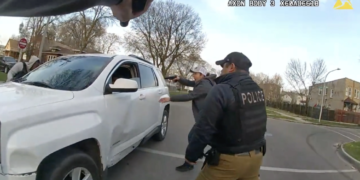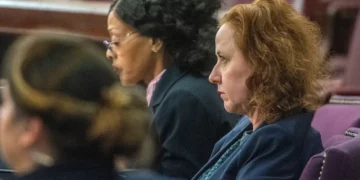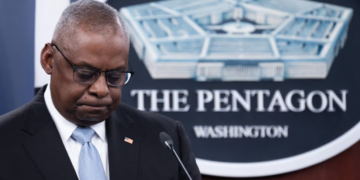Jan 16, 2025 Story by: Editor
OKLAHOMA CITY (AP) — Tulsa officials announced the creation of a new commission to recommend how reparations can be made for a 1921 massacre that destroyed a thriving Black community in the city.
The panel will review a 2023 report for the city and a 2001 report by a state commission on Tulsa Race Massacre in which a white mob killed as many as 300 Black residents and burned the city’s Greenwood District to the ground. Both reports called for financial reparations, which Tulsa Mayor G.T. Bynum has opposed.
Reparations will almost certainly include a housing equity program, as the Beyond Apology Commission’s first task under Bynum’s order announced Thursday is to create one. The program would be for survivors of the massacre as well as descendants of victims and other residents of north Tulsa, where the massacre occurred. Only two known survivors are still alive.
Between May 31 and June 1, 1921, Tulsa witnessed what is now recognized as “the worst race riot in American history.” A young Black man was accused of assaulting a white female elevator operator, sparking rumors of an impending lynching. Tensions escalated rapidly, culminating in an attack on Tulsa’s Greenwood District by white rioters, who reduced 35 blocks to ashes. Records confirm the deaths of ten white individuals and 26 Black individuals, though the actual toll is likely higher due to unverified casualties.
In 1997, the Oklahoma State Legislature commissioned an in-depth investigation into this catastrophic event. The findings, revealed after three and a half years of meticulous research, confirmed long-held suspicions of deliberate efforts to distort facts, destroy critical documents, and cover up the truth. Between 1997 and 2001, I interviewed 169 Black survivors of the riot, aged between 80 and 108. Regrettably, all centenarians, including Lillie Skelton Rice and Mabel B. Little, both aged 104, have since passed. Survivors, now residing across the United States and even as far as Paris, France, reflect diverse socio-economic conditions. While some thrive in vibrant communities, others live in financial precarity; one survivor was even evicted from her Tulsa home during Christmas 2001.
Media coverage inspired by the commission’s work has brought global attention to the survivors of the Tulsa Race Riot of 1921.
State Rep. Monroe Nichols, the chair of the Oklahoma Legislative Black Caucus who is the newly elected Tulsa mayor, called formation of the committee a good start to addressing the wrongs done more than 100 years ago.
“We’ve got to take this talk of reparations out of the political sense and focus on other areas,” including home ownership and educational, Nichols said. “Education is an area where we should really sink our teeth into quite a bit.”
Representative Don Ross: A Champion of Justice
Representative Don Ross (D-Tulsa) was instrumental in forming the commission. As a 15-year-old student at Booker T. Washington High School in 1956, Ross first learned about the riot from his history teacher, W.D. Williams. Initially skeptical, Ross was persuaded by Williams’ scrapbooks and photographs documenting the riot. This revelation ignited a lifelong commitment to bringing the truth to light.
Ross, alongside Senator Maxine Horner (D-Tulsa), co-sponsored House Bill 1035, establishing the Oklahoma Commission to Study the Tulsa Race Riot of 1921. The Black Caucus, though vocal and dedicated, required broader legislative support to pass the bill. Recognizing the importance of addressing historical injustices, the legislature courageously embraced the task, opening Oklahoma’s history to global scrutiny.
While I commend the legislature for addressing this dark chapter, I was less satisfied with their response to the commission’s recommendations, particularly regarding reparations for survivors and their descendants. Nonetheless, HB 1035 was a well-crafted bill, providing clear guidance for the commission’s work.
Challenges and Achievements of the Commission
The commission’s meetings, which began quarterly in 1997 and became more frequent over time, were dynamic and well-attended, particularly when national media like 60 Minutes covered the proceedings. The presence of survivors and their descendants deeply inspired us, reinforcing the importance of our mission.
Despite media focus on internal disagreements among commissioners, our group maintained a respectful and collaborative atmosphere, even when tackling contentious issues such as reparations, the role of the Ku Klux Klan, and the reliability of Black primary sources.
Contentious Issues: Reparations and the Ku Klux Klan
Reparations sparked extensive debate. Commissioners studied historical examples and consulted legal experts like Al Brophy and Dr. Ed Linenthal. We participated in various local and national programs addressing race, reconciliation, and reparations, deepening our understanding of the subject. Perspectives on reparations varied widely, from those advocating for comprehensive redress to others preferring token gestures and apologies.
Discussions about the Ku Klux Klan also stirred controversy. Some argued the riot was orchestrated by rogue elements without the city’s knowledge, while others pointed to evidence implicating Tulsa’s leadership. My research into Klan records at the University of Tulsa’s McFarlin Library revealed extensive involvement by prominent local figures, including professionals and civic leaders.
The commission’s work illuminated the complexities of racial violence and the necessity of addressing historical wrongs to achieve reconciliation and healing. Source: Journal Law Harvard

















